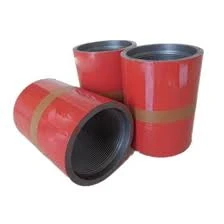- Afrikaans
- Albanian
- Amharic
- Arabic
- Armenian
- Azerbaijani
- Basque
- Belarusian
- Bengali
- Bosnian
- Bulgarian
- Catalan
- Cebuano
- Corsican
- Croatian
- Czech
- Danish
- Dutch
- English
- Esperanto
- Estonian
- Finnish
- French
- Frisian
- Galician
- Georgian
- German
- Greek
- Gujarati
- Haitian Creole
- hausa
- hawaiian
- Hebrew
- Hindi
- Miao
- Hungarian
- Icelandic
- igbo
- Indonesian
- irish
- Italian
- Japanese
- Javanese
- Kannada
- kazakh
- Khmer
- Rwandese
- Korean
- Kurdish
- Kyrgyz
- Lao
- Latin
- Latvian
- Lithuanian
- Luxembourgish
- Macedonian
- Malgashi
- Malay
- Malayalam
- Maltese
- Maori
- Marathi
- Mongolian
- Myanmar
- Nepali
- Norwegian
- Norwegian
- Occitan
- Pashto
- Persian
- Polish
- Portuguese
- Punjabi
- Romanian
- Russian
- Samoan
- Scottish Gaelic
- Serbian
- Sesotho
- Shona
- Sindhi
- Sinhala
- Slovak
- Slovenian
- Somali
- Spanish
- Sundanese
- Swahili
- Swedish
- Tagalog
- Tajik
- Tamil
- Tatar
- Telugu
- Thai
- Turkish
- Turkmen
- Ukrainian
- Urdu
- Uighur
- Uzbek
- Vietnamese
- Welsh
- Bantu
- Yiddish
- Yoruba
- Zulu
Understanding and Installing Vacuum Hose Couplings for Optimal Performance in Your System
Understanding Vacuum Hose Couplings Essential Components in Fluid Dynamics
Vacuum hose couplings are critical components in various industries, playing a significant role in fluid dynamics, especially in applications involving vacuum systems. These couplings connect hoses used in vacuum applications, ensuring a secure and leak-free connection that allows for the efficient transfer of gases and fluids.
What is a Vacuum Hose Coupling?
A vacuum hose coupling is a fitting that connects two hoses or a hose to a piece of equipment within a vacuum system. They are designed to maintain a vacuum by preventing air from entering the system, thereby preserving the necessary pressure levels for optimal operation. These couplings can vary in size, material, and design, catering to different requirements based on the specific application.
Types of Vacuum Hose Couplings
Several types of vacuum hose couplings are available, each with unique features suited for different applications
1. Barbed Couplings These are perhaps the most common type of vacuum hose couplings. They feature a series of ribs or barbs along the fitting that grip the hose tightly when it is pushed over the coupling. Barbed couplings are easy to use and provide a secure connection for low to moderate vacuum levels.
2. Clamp Couplings These couplings consist of a fitting with a smooth surface and require a clamp to secure the hose. They are ideal for high-pressure applications and can accommodate more significant pressure fluctuations, making them versatile for various industrial uses.
3. Quick-Disconnect Couplings As their name suggests, quick-disconnect couplings allow for rapid connection and disconnection of hoses. This feature is particularly useful in applications where hoses need to be changed frequently, minimizing downtime and improving efficiency.
vacuum hose coupling

4. Flanged Couplings Flanged couplings provide a robust and stable connection, typically used in large-scale industrial systems. They consist of a flange on the end of each hose that bolts together, offering superior strength and sealing capabilities.
Importance in Industrial Applications
The significance of vacuum hose couplings cannot be overstated, particularly in industrial settings. They are widely utilized in HVAC systems, food processing, pharmaceuticals, and chemical industries, among others. In HVAC systems, for instance, vacuum couplings help evacuate air from refrigerant lines, ensuring efficient system performance. In food processing, they maintain sterile conditions by preventing contaminants from entering vacuum packaging systems.
Proper installation and maintenance of vacuum hose couplings are crucial, as a poor connection can lead to air leaks, compromising the entire system's efficiency. Regular inspections help identify wear and tear in the couplings, allowing users to replace them before causing significant issues.
Material Considerations
When selecting vacuum hose couplings, the material of construction is a vital consideration. Common materials include brass, stainless steel, and plastic. Each material has its advantages, such as corrosion resistance in stainless steel, lightweight properties of plastic, and durability of brass. The choice depends on the specific application and the characteristics of the fluids or gases involved.
Conclusion
In conclusion, vacuum hose couplings are essential elements in ensuring the efficiency and effectiveness of vacuum systems across various industries. Understanding the different types, their applications, and maintenance needs can greatly enhance system performance and longevity. As industries continue to innovate and evolve, the demand for reliable vacuum hose couplings will remain a crucial aspect of fluid dynamics, underscoring their importance in modern engineering and manufacturing processes.
-
Tubing Pup Joints: Essential Components for Oil and Gas OperationsNewsJul.10,2025
-
Pup Joints: Essential Components for Reliable Drilling OperationsNewsJul.10,2025
-
Pipe Couplings: Connecting Your World EfficientlyNewsJul.10,2025
-
Mastering Oilfield Operations with Quality Tubing and CasingNewsJul.10,2025
-
High-Quality Casing Couplings for Every NeedNewsJul.10,2025
-
Boost Your Drilling Efficiency with Premium Crossover Tools & Seating NipplesNewsJul.10,2025







